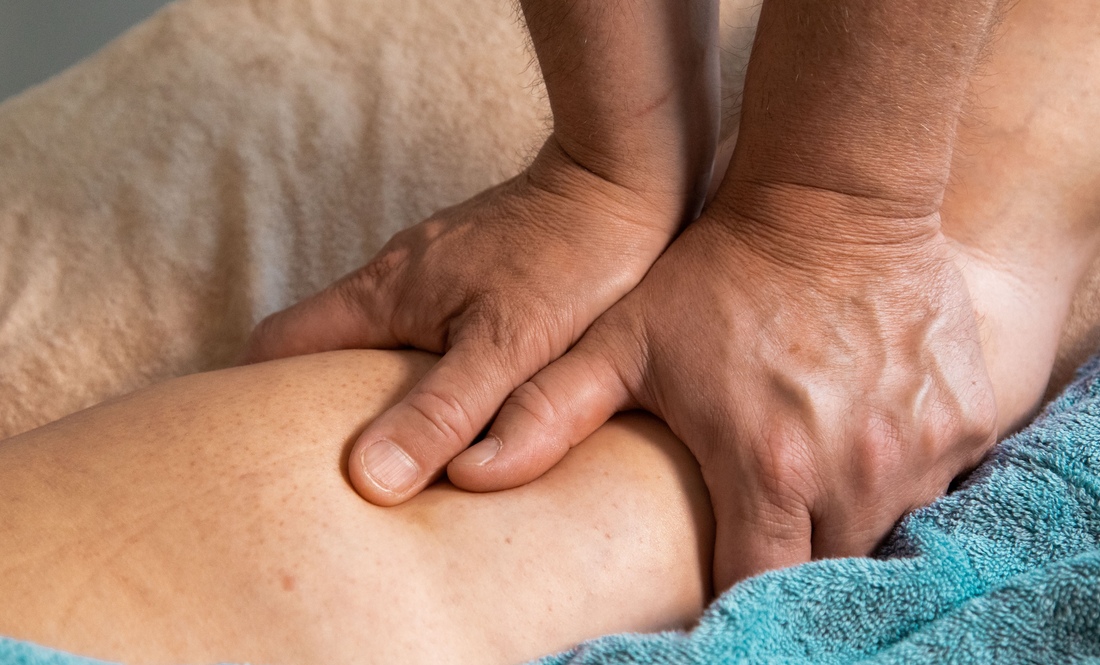
What is Myofascial Release? A Comprehensive Guide
Share
What is Myofascial Release? A Comprehensive Guide
Myofascial release therapy is a manual therapy technique that is used to treat a variety of soft tissue and connective tissue dysfunctions. This type of physical therapy is typically performed by a physical therapist, chiropractor, or massage therapist, who uses hands-on techniques to improve range of motion, reduce chronic pain, and promote healing.
The myofascial tissues are a network of fibers that surround and support muscles throughout the body. These tissues can become tight and restricted due to poor posture, injury, or other health conditions, resulting in pain and reduced range of motion. Myofascial release techniques can help to release this tension and improve blood flow, promoting healing and reducing pain.
Myofascial release works by targeting the fascia, which is a web-like network of connective tissue that surrounds and supports muscles and other structures in the body. When the fascia becomes tight or restricted, it can put pressure on the muscles, nerves, and other structures in the body, leading to pain, reduced range of motion, and other dysfunctions.
The effects of myofascial release have been studied extensively, with several systematic reviews and randomized controlled trials demonstrating its effectiveness in treating a variety of health conditions. According to the Mayo Clinic, myofascial release treatments have been shown to be effective in reducing pain associated with low back pain, neck pain, migraines, fibromyalgia, carpal tunnel syndrome, and myofascial pain syndrome.
One of the most popular myofascial release techniques is the use of a foam roller, which is a self-massage technique that involves applying pressure to the muscles and fascia using a foam roller. This technique can be particularly helpful for athletes and people who suffer from soreness or tightness in the muscles.
Other myofascial release techniques include direct and indirect myofascial release, trigger point release, and bodywork. These techniques are typically performed by a physical therapist or massage therapist, who uses their hands, fingers, and elbows to apply pressure to the fascia and release tension.
One of the pioneers of myofascial release therapy is John F. Barnes, who has developed a comprehensive approach to this technique. Barnes' approach involves a whole-body approach to myofascial release, treating not just the affected area, but also other areas of the body that may be contributing to the dysfunction. This approach has been shown to be particularly effective in treating chronic pain and improving range of motion.
In addition to physical therapists and massage therapists, chiropractors and sports medicine practitioners also use myofascial release techniques to treat a variety of conditions. This type of manual therapy can be an effective alternative to more invasive treatments, such as surgery or medication, for reducing pain and improving function.
Myofascial Release Techniques
There are several different techniques used in myofascial release. The most common techniques include:
Direct Myofascial Release: This technique involves applying pressure directly to the affected area. The therapist will use their hands or fingers to apply pressure to the fascia, and may also use stretching and other techniques to help release tension.
Indirect Myofascial Release: This technique involves applying pressure to an area that is not directly affected by the pain or discomfort. The therapist will use their hands or fingers to apply pressure to the fascia, and may also use stretching and other techniques to help release tension.
Trigger Point Release: This technique involves applying pressure to specific trigger points in the body. Trigger points are areas of muscle that are particularly sensitive to touch, and can cause pain and discomfort. By applying pressure to these points, the therapist can help to relieve tension and reduce pain.
Foam Rolling: This is a self-massage technique that involves using a foam roller to apply pressure to the muscles and fascia. Foam rolling can be particularly helpful for athletes and people who suffer from tight muscles.
Massage therapy: Massage is another effective technique that can be used to improve soft tissue and connective tissue dysfunctions. Like myofascial release therapy, massage therapy involves hands-on techniques that can help to release tension, improve blood flow, and reduce pain. Massage therapy can also help to improve flexibility and range of motion, making it an ideal treatment for athletes and people who suffer from chronic pain or poor posture.
Recently, massage guns have become a popular tool for massage therapists and individuals alike. These devices use percussive therapy to deliver targeted vibrations to the muscles and soft tissues, which can help to release tension and promote healing. Massage guns are especially helpful for individuals who may not have access to regular massage therapy or who are unable to afford the cost of professional massage therapy.
Overall, myofascial release is a safe and effective therapy that can be used to treat a variety of soft tissue and connective tissue dysfunctions. Whether you suffer from chronic pain or are looking to improve your range of motion, myofascial release techniques can help you achieve your goals. So, consider seeking out a qualified physical therapist or massage therapist who specializes in this technique to see how myofascial release can help you achieve better health and well-being.
